Multimeter Accessories, Features & Options
The Definitive Guide To Using Multimeters
Multimeter Accessories, Features & Options
The most common multimeter accessory you will need to consider is the type of multimeter leads you will be using. The primary multimeter feature is if the multimeter comes with auto-ranging functionality. Additionally, another major consideration is if the multimeter has any data output options, and if so what type of data output it can provide.
After deciding between an analog or digital multimeter and whether it should be a benchtop and handheld multimeter, you should consider a few common accessories, features and options that many different types of multimeters can provide:
- Auto-Ranging Capability
- Multimeter Lead Types
- Multimeter Data Output Options
the Definitive Guide to Using Multimeters
This is the 9th article in our series, The Definitive Guide to Using Multimeters.
This article delves into the common multimeter accessories, features and options that you should consider when selecting your next multimeter (or even your first!).
If you missed the start of the series: What Is a Multimeter: The Definitive Guide to Multimeters, check it out now! You will be able to work your way back to this article quite quickly.
The Definitive Guide to Multimeters
- What is a Multimeter?
- Why Are Multimeters Important?
- What Do Multimeters Measure?
- What is the History of the Multimeter?
- What are the Common Types of Multimeters?
- What are Common Multimeter Options?
- What are Some Multimeter Specifications?
- What are Common Uses of Multimeters?
- How Do I Choose the Best Multimeter For The Job?
- How Do I Use a Multimeter?
- How Do I Properly Maintain a Multimeter?
- How Do I Calibrate a Multimeter?
- What is the Future of Multimeters?
- Multimeter FAQs
Auto Ranging Multimeters
An auto-ranging multimeter is an electrical measurement device that automatically detects and selects the appropriate range for the measurement being taken.
Unlike manual ranging multimeters, where the user has to choose the right range, these devices simplify the process, reducing the chance for errors.
Auto-ranging multimeters are the future of electrical and electronic measurements. With their ease of use and accurate readings, they are a must-have for both professionals and beginners alike. Without having to put any extra thought into it, you will always get the most accurate readings possible and will ensure that you are not overloading your multimeter.
Benefits of Auto-ranging Multimeters
Auto-ranging multimeters come with a host of advantages:
Efficiency
- Time-saving: One of the primary benefits of using an auto-ranging multimeter is the amount of time it saves. Without having to fiddle around selecting the correct measurement range, users can get their readings more quickly.
- Reduced Interruptions: In tasks where speed and continuous monitoring are vital, auto-ranging multimeters allow for smoother operations. There's no need to pause and adjust the range constantly, leading to more uninterrupted measurements.
Accuracy
- Minimized Human Error: The manual selection of a range always carries the risk of user error. If a wrong range is selected, the readings can be off, or the device can max out, displaying an overload indication. Auto-ranging multimeters mitigate this risk by automatically choosing the right range.
- Consistent Readings: With the device automatically setting the range, there's a greater assurance that readings will be consistent across various measurements. This consistency is vital when diagnosing issues or performing detailed inspections.
Ease of Use
- User-friendly for Beginners: For those who are new to electronics or electrical measurements, auto-ranging multimeters are a blessing. The user doesn’t need to have extensive knowledge about the expected value or range of measurements. They can simply connect the probes and get a reading.
- Reduces Complexity: With fewer knobs or buttons to adjust for range, the overall user interface of auto-ranging multimeters is streamlined. This simplification results in a more intuitive experience, especially when comparing with manual-ranging devices.
- Versatility: The auto-ranging feature can accommodate a wide array of measurements. Whether you're checking the voltage of a battery or the resistance of a resistor, the multimeter will adjust its range accordingly. This versatility means users don’t have to constantly reference manuals or charts to figure out the right setting.
Multimeter Leads and Probes
Multimeter leads (also known as multimeter probes) come in varying shapes and sizes, but the most common multimeter lead types include:
- Test Leads
- Alligator Clips
- Spring Hooks
- Back Probe Pins
- Current Clamps
- Temperature Probes
- Pincer Probes
- Flexible Probes
While all the functionality discussed so far helps you do your job efficiently, the multimeter is dead in the water without leads.
A multimeter lead is a conductive wire used to establish a connection between a multimeter and the object or circuit under test. Multimeter leads are essential tools for technicians, electricians, and hobbyists when performing electrical and electronic measurements.
Nearly all multimeter leads contain:
- Probe Tip: This is the pointy end that touches the component or circuit under test. Some probe tips might be sharp, while others might be blunt or even have additional accessories like clips, hooks, or back-probe pins.
- Wire: This is the flexible, insulated conductor that carries the measurement signal from the probe tip to the multimeter. The wire is typically covered in a rubber or silicone insulation to prevent unintentional short-circuits or shocks.
- Connector: This end plugs into the multimeter. Most commonly, it's a banana plug, but the exact type can vary based on the multimeter's design.
Here are some common probe types used with multimeters:
Test Leads
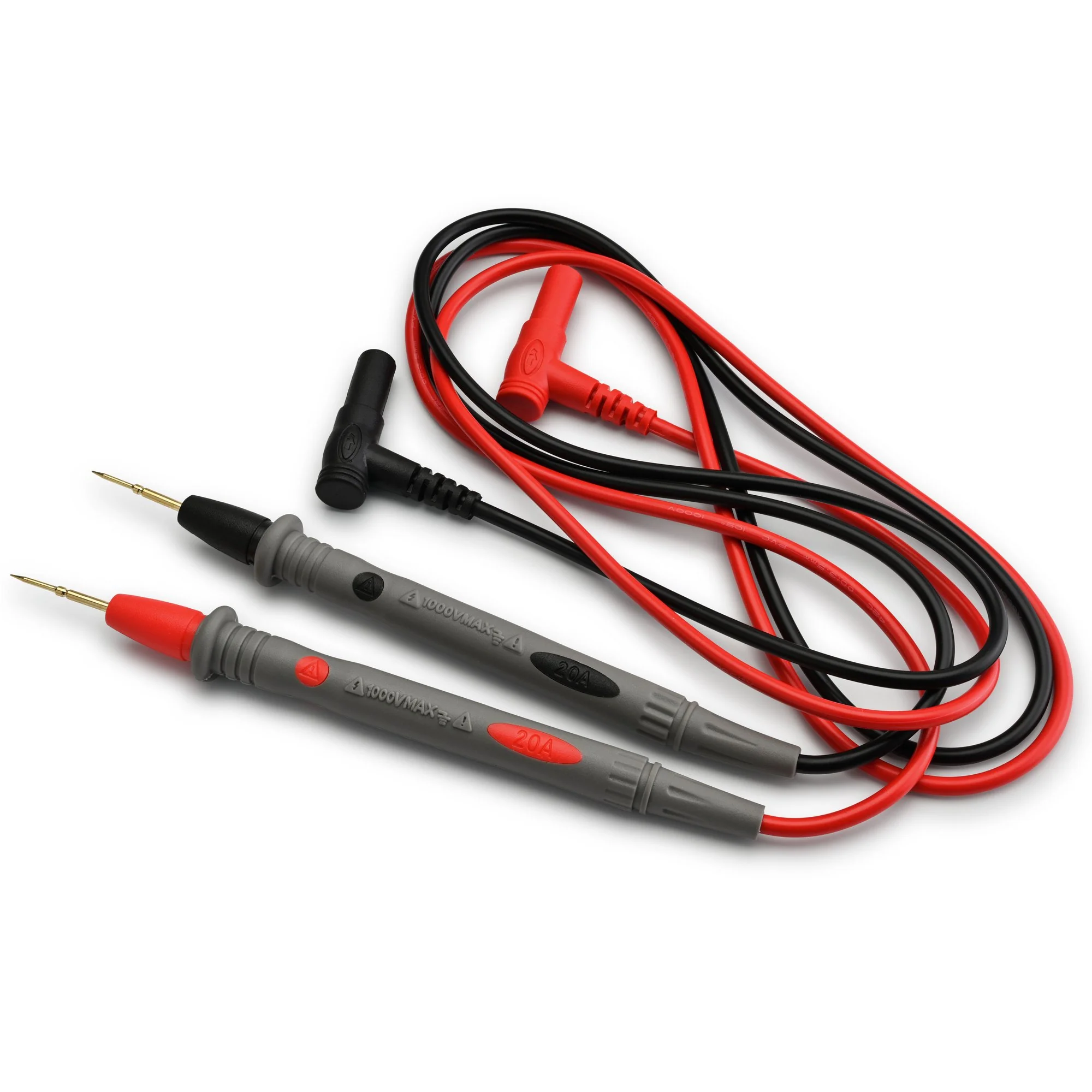
Multimeter Test Leads
Test leads are the most basic and common type of probes used with multimeters. Essentially, every standard multimeter is going to come with standard test leads. Test leads are versatile and suitable for a wide range of measurements. They consist of insulated wires with probe tips at the ends. The probe tips are typically pointed and can be used to make contact with test points, terminals, or components.
Alligator Clips
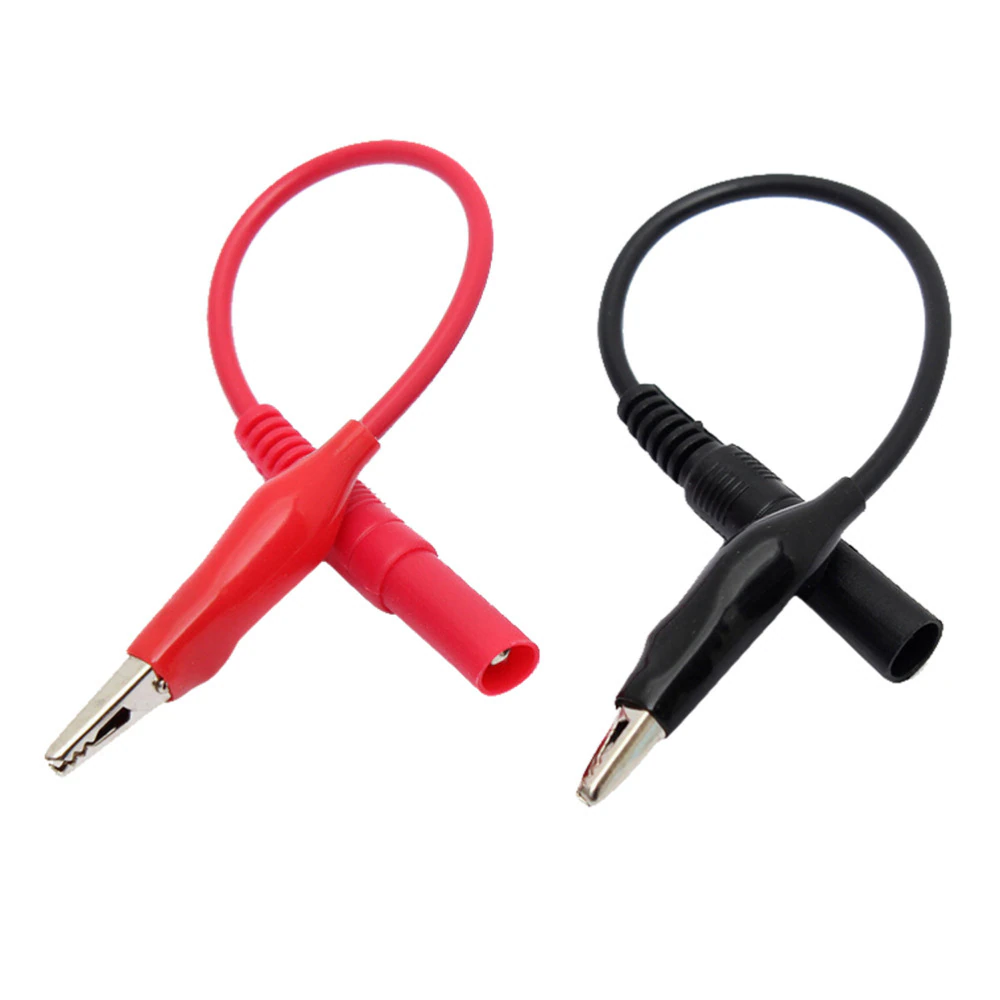
Multimeter Leads - Alligator Clips
Alligator clips are spring-loaded clips with jaws that can be opened and closed. They are useful for clamping onto larger objects like terminals, wires, or components, providing a secure connection for measurements. Alligator clips are especially helpful when you need to maintain a stable connection without manually holding the probes.
Spring Hooks
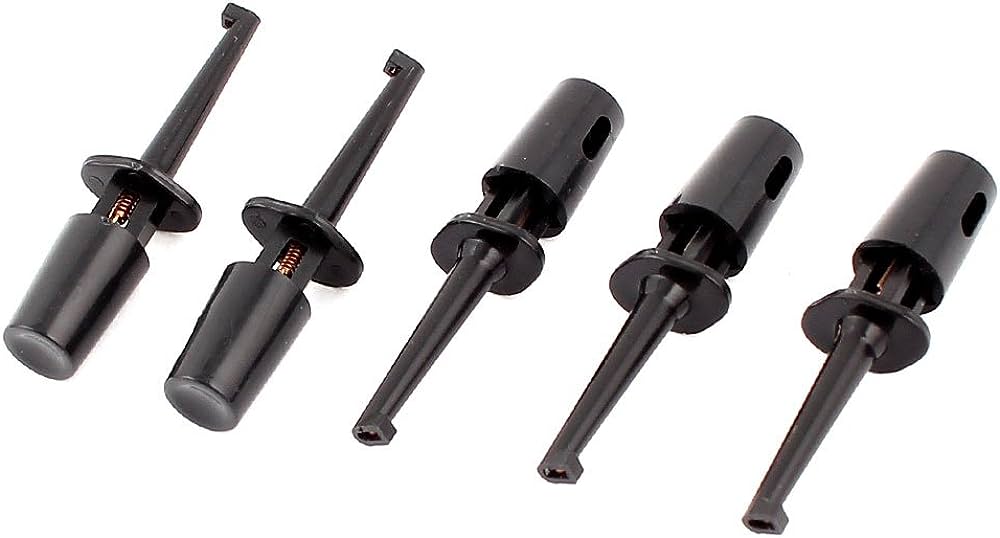
Multimeter Leads - Spring Hooks
A spring hook multimeter lead is a type of test lead that has a small, retractable hook at the end. This hook allows the user to attach the lead to a wire, component lead, or other point of interest, ensuring a stable connection while freeing up the user's hands for other tasks. Spring-loaded hooks are useful for gripping onto small wires or components, providing a hands-free connection for measurements.
The hook mechanism typically works with a push-button or slider on the probe. When the button is pressed or the slider is moved, the hook retracts. Releasing the button or returning the slider to its original position causes the hook to spring back out.
Back Probe Pins
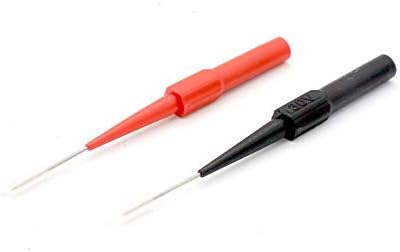
Multimeter Leads - Back Probe Pins
A back probe pin for a multimeter lead is a test accessory that allows users to probe electrical connections from the rear, or "backside," of a connector without disconnecting it. This is particularly useful in automotive and electronics diagnostics because it minimizes the risk of damaging the connector or wire insulation. The pin is designed to be thin and sharp, allowing it to slide past the wire's insulation and make contact with the conductor inside.
Current Clamps
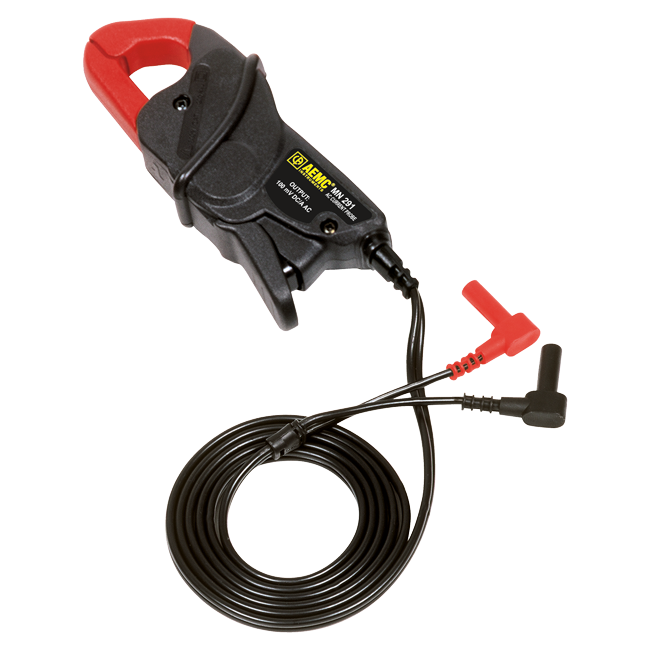
Multimeter Leads - Current Clamps
Current clamps, also known as current probes, are used specifically for measuring electrical current. They have a hinged, magnetic structure that can be clamped around a conductor, allowing non-intrusive current measurements without breaking the circuit.
For example, you could place a current clamp around a wire running to a machine. This will give you an accurate reading of the current, without having to shut down and disassemble the machine.
Current clamps are especially useful for measuring high currents, dramatically increasing the safety of taking measurements.
Temperature Probes
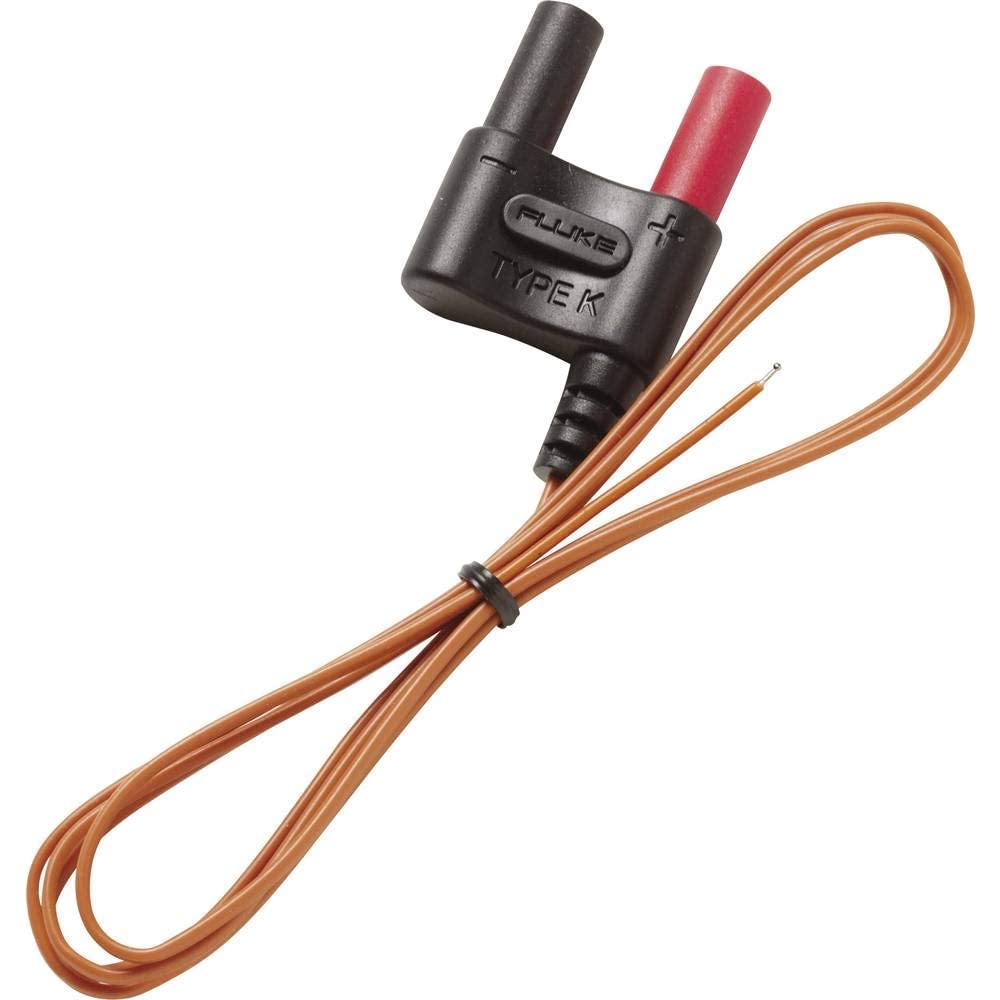
Multimeter Leads - Temperature Probes
Some multimeters support temperature measurements, and they come with specialized temperature probes. A temperature probe for a multimeter, often referred to as a thermocouple probe, allows users to measure temperature as part of their diagnostic or testing procedures. Thermocouples are devices that generate a voltage proportional to a temperature difference. They're composed of two different types of metal wires joined at one end.
When two dissimilar metals are joined together and there's a temperature difference between the joined end (measurement junction) and the other ends (reference junction), a small voltage is generated. This phenomenon is known as the Seebeck effect. The voltage produced is proportional to the temperature difference between the two ends. The multimeter can then detect this voltage and convert it to a temperature reading, to be displayed on the multimeter display.
Temperature probes are quite useful in HVAC, automotive, and other applications where temperature monitoring is required.
Pincer Probes
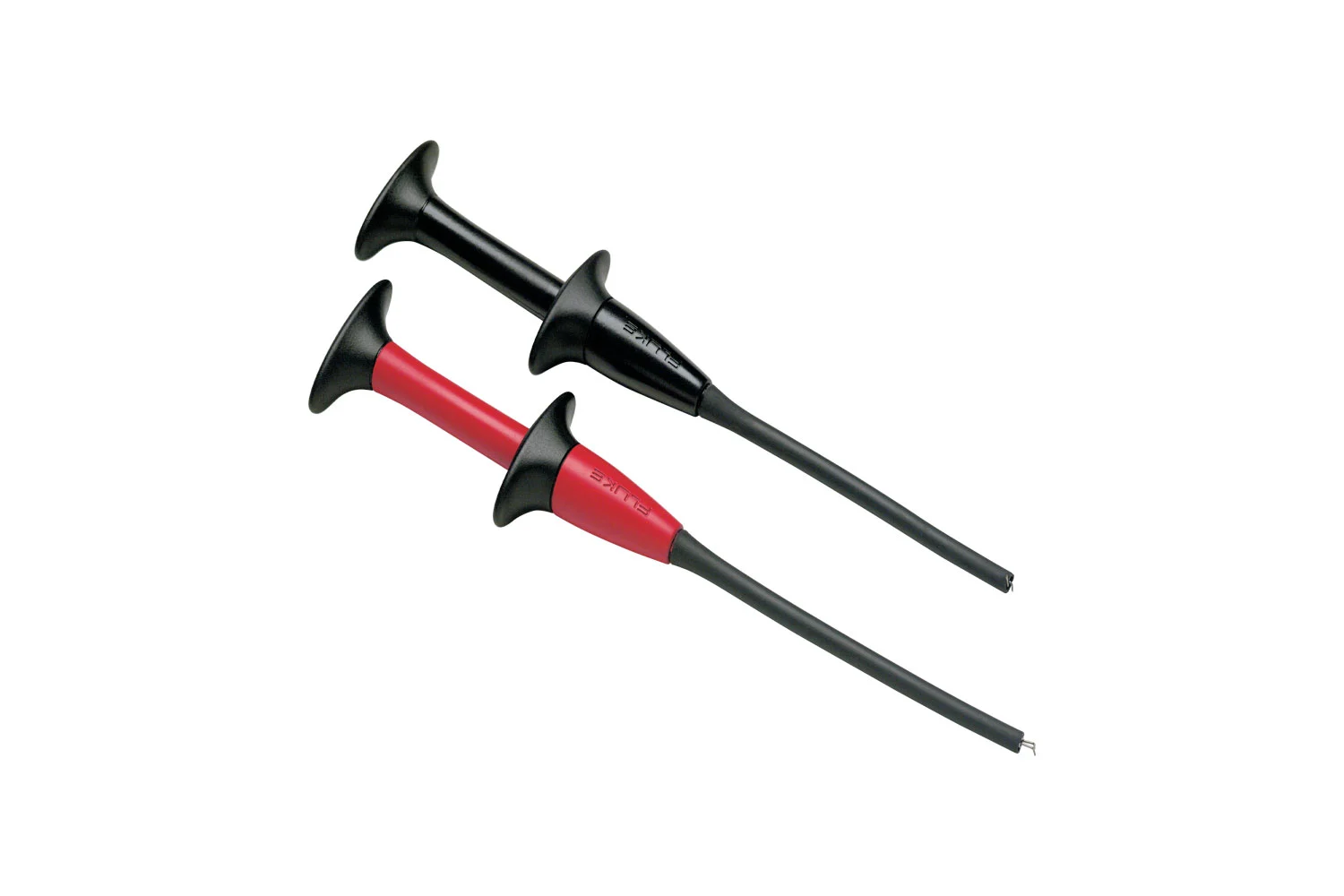
Multimeter Leads - Pincer Probes
A pincer probe, also known as a grabber or hook clip, is a type of multimeter lead accessory designed to grip or latch onto components, wires, or test points. Similar to alligator clips or spring hooks, the pincer-like mechanism allows for hands-free testing, making it easier to measure in situations where components are closely packed or where it's challenging to maintain a stable connection with standard probe tips.
The pincer probe typically has a spring-loaded mechanism. When you press or squeeze the body of the probe, the "jaws" or "teeth" open. When released, the spring action causes the jaws to close or clamp down, providing a secure grip on the test point.
Flexible Probes
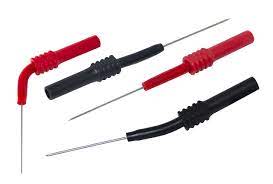
Multimeter Leads - Flexible Probes
A flexible probe multimeter lead is designed to provide easier access to test points in tight or awkward spaces. These probes typically feature a flexible, elongated body that can be bent or shaped to reach difficult areas.
The flexible body of the probe can be made from materials like silicone, allowing it to be bent into various shapes while maintaining its position. Inside the flexible body, the probe consists of a conductive core (usually made of metal) surrounded by an insulating material. The tip of the probe is typically sharp or pointed to ensure good contact with test points. Some designs may include an integrated clamp or hook at the tip for a more stable connection.
Multimeter Data Output Options
Multimeter have numerous ways to output data to other devices. The most common methods of data output for multimeters are:
- Analog Output
- Wired Output
- Wireless Output
- Data Logging
- Software Integration
- Memory Storage
- External Display
- Printer Output
Outside of just displaying the electrical measurement on the unit itself, many multimeters have different ways to capture the data, making it easier to log, analyze, and connect with other devices.
Having an option to collect and store this data, without direct involvement, is highly beneficial – especially when collecting large amounts of data. Without this, you would have to write down each measurement, dramatically increasing the time and opening up substantial room for error by you potentially writing down the measurement incorrectly.
Here are some common data output options you might find in multimeters:
Analog Output
Some multimeters feature analog output, typically in the form of a voltage signal proportional to the measured quantity. This analog output can be used to interface with other devices such as data loggers, oscilloscopes, or control systems that accept analog input signals.
Wired Output
Many modern multimeters come equipped with digital interfaces, such as USB or RS-232, allowing for direct communication with computers, laptops, or other digital devices. These interfaces enable data transfer in real-time or for use with specialized software or applications.
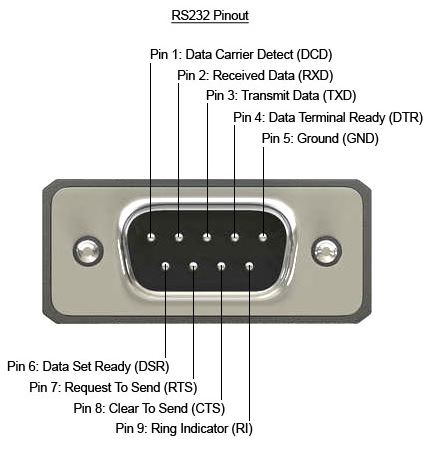
Multimeter Data Output - RS-232 Wired Output
Wireless Output
Even easier to use than wired outputs, multimeters with wireless connectivity options, such as Bluetooth or Wi-Fi, provide the ability to transmit measurement data wirelessly to compatible devices. This feature enables remote monitoring, control, or data transfer without the need for physical connections, allowing you to work continuously without having to relocate your computer every time.
Data Logging
Some multimeters have built-in data logging capabilities, allowing you to record measurements over a specific time period. The logged data can be saved internally or exported to a computer or external storage device for further analysis.
Software Integration
Certain multimeter models come with dedicated software that allows seamless integration with a computer. The software often provides advanced data analysis, graphing, and reporting capabilities, enhancing the functionality and usability of the multimeter.
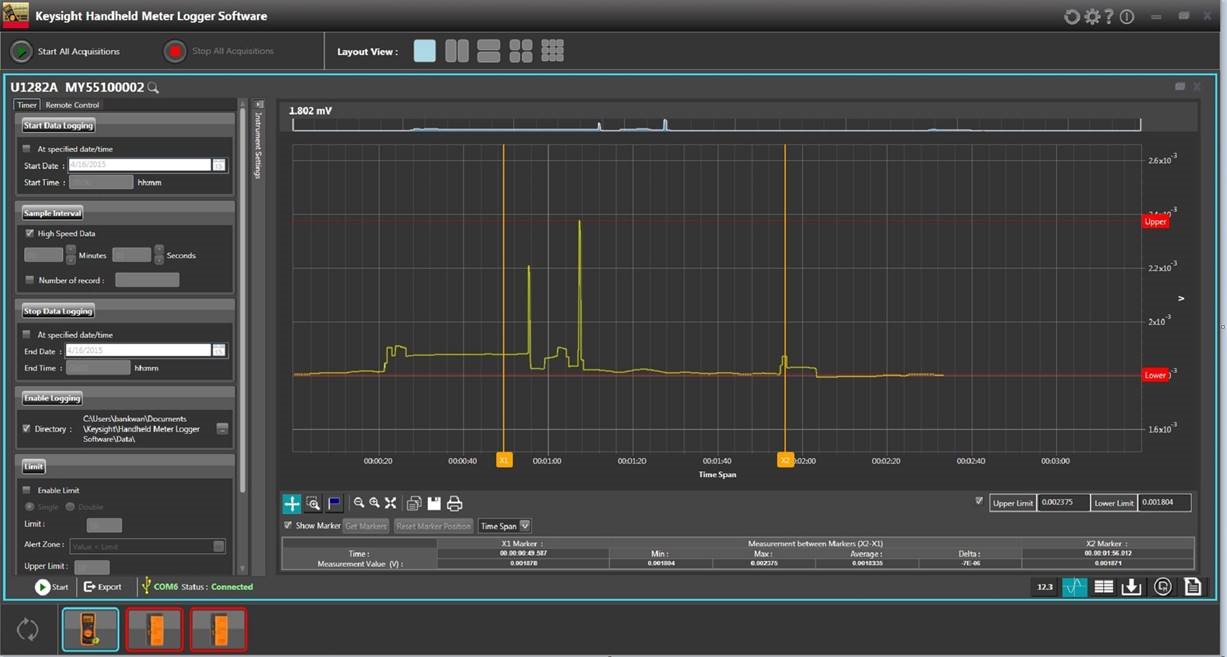
Multimeter Data Output - Software Integration (Keysight Handheld Meter Logger Software)
Memory Storage
Multimeters with onboard memory storage allow you to save measurements internally for later retrieval or transfer to a computer. This feature can be useful when working in situations where immediate data output is not necessary.
External Display
Some multimeters offer the option to connect an external display or monitor, allowing for enhanced visibility or multiple viewing locations. This feature is beneficial when working in team settings or when you need to display measurements in a larger format.
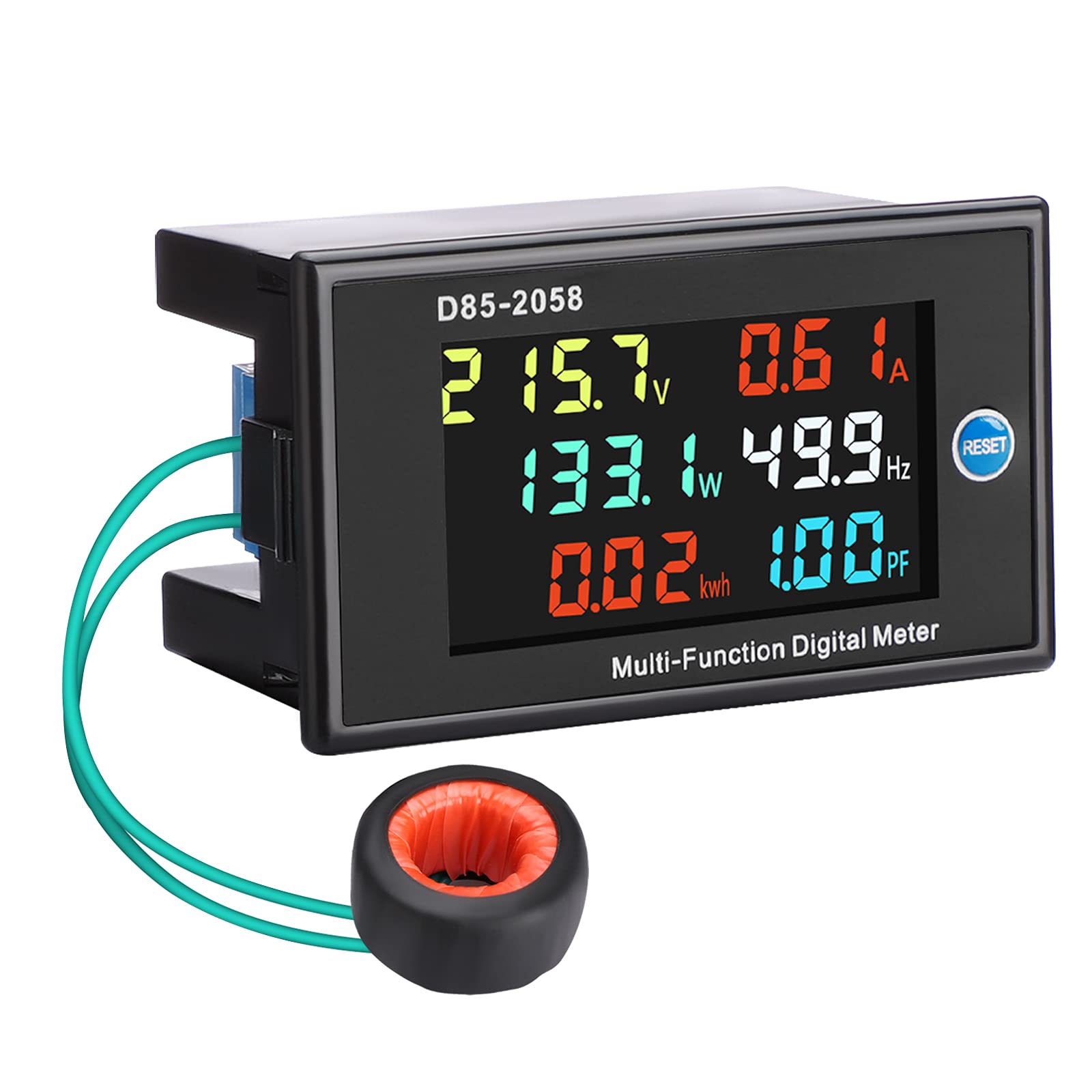
Multimeter Data Output - External Display
Printer Output
Certain multimeters may include a printer output port, which enables you to connect a compatible printer and print measurement results directly without the need for a computer or additional software.
What's Next: The Definitive Guide to Multimeters
We have now fully reviewed all the common construction types, accessories, features and options that a multimeter can include. Next up, we will start to discuss the different specifications that multimeters can have.
In the next section, we will start this dive into multimeter specifications by exploring the how accurate multimeters are. Lets get started and head to Section 10: Multimeter Accuracy.
ISO/IEC 17025 Accredited Multimeter Calibration
Fox Valley Metrology proudly offers accredited precision measuring instrument calibration services of Multimeters. We calibrate all types of Multimeters at our offices throughout the country, meaning we are sure to have local Multimeter calibration services near you.
- ✓ ISO 17025 accredited calibration vendor
- ✓ Broadest calibration scope in the industry
- ✓ 3-5 day turnaround time for laboratory calibrations
- ✓ Pickup and delivery service options available
- ✓ Onsite calibrating service options